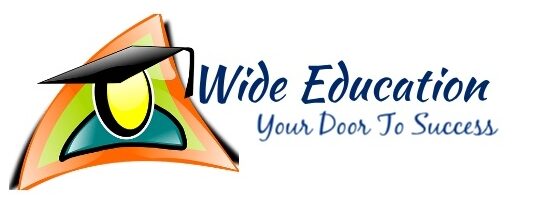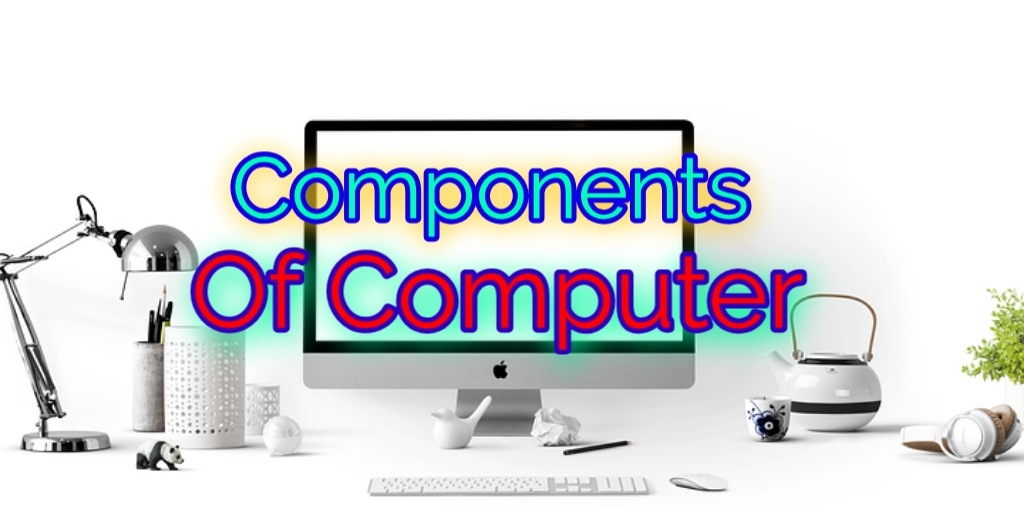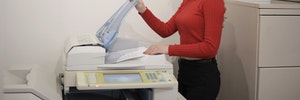A. Hardware :
Table of Contents
Hardware represents the physical and tangible components of a computer, i.e. the components that can be seen and touched.
Examples of Hardware are the following: Components of Computers
1. Input devices: keyboard, mouse, etc.
2. Output devices: printer, monitor, etc.
3. Processing Devices: CPU, motherboard, RAM, etc.
4. Secondary storage devices: Hard disk, CD, DVD, etc.
1. Input Devices :
– Input device enables the user to send data, information, or control signals to the computer. The central processing unit of the computer receives the input and processes it to produce output.
– Some of the popular input devices are:
1. Keyboard
2. Mouse
3. Scanner
4. Joystick
5. Light Pen
6. Trackball
7. Microphone
8. Magnetic Ink Character Recognition (MICR)
9. Optical Character Reader (OCR)
10. Digitizer
11. Bar Code Reader
12. Optical Mark Reader(OMR)
1. Keyboard:
– It is a basic input device that is used to enter data by pressing keys.
– It has different sets of keys for letters, numbers, characters, and functions.
– QWERTY keyboard is the commonly used keyboard to enter data.
2. Mouse:
– It is a handheld input device. It is used to move the cursor or pointer across the screen.
– It generally has a left and right button and a scroll wheel between them.
– Laptop computers come with a touchpad that works as a mouse.
– It lets you control the movement of the cursor or pointer by moving your finger over the touchpad.
3. Scanner:
– Scanner uses the pictures and pages of text as input.
– It scans the picture or document.
– The scanned picture or document then converted into digital format or file and is displayed on the screen as output.
– Flatbed scanners are the commonly used scanners.
4. Joystick:
– It is also a pointing input device like the mouse.
– It is made up of a stick with a spherical base.
– The base is fitted in the socket that allows free movement of the stick.
– The movement of the stick controls the cursor or pointer on the screen.
5. Light Pen:
– Light pen is a computer input device that looks like a pen.
– The tip of the light pen contains a light-sensitive detector that enables the user to point to or select objects on the display screen.
– Its light-sensitive tip detects the object location and sends the corresponding signals to the CPU.
– It also helps you draw on the screen if needed.
6. Trackball:
– It is a stationary input device that has a ball mechanism to move the pointer or cursor on the screen.
– The ball is half inserted in the device and can be easily rolled with a finger or thumb.
– The device has a sensor to detect the rotation of the ball.
– It is an ideal device if you have limited desk space as you don’t need to move it like a mouse.
7. Microphone:
– Microphone is a computer input device that is used to input sound.
– It receives the sound, converts it into audio signals.
– The audio signals are converted into digital data and stored in the computer.
– The microphone also enables the user to telecommunicate with others.
– It is also used to add sound to presentations and with webcams for video conferencing
8. Magnetic Ink Character Recognition (MICR):
– MICR computer input device is designed to read the text printed with magnetic ink.
– It is widely used in banks to process cheques.
– The details on the bottom of the cheque (MICR No.) are written with magnetic ink.
– The device reads the details and sends to a computer for processing.
– It can process three hundred cheques in a minute with hundred percent accuracy.
9. Optical Character Reader (OCR):
– OCR computer input device is designed to convert the scanned images of handwritten, typed, or printed text into digital text.
– It is widely used in offices and libraries to convert documents and books into electronic files.
– The converted documents can be edited if required.
10. Digitizer:
– It is a computer input device that has a flat surface and usually comes with a stylus.
– It enables the user to draw images and graphics as we draw on paper with a pencil.
– The images or graphics drawn on the digitizer appear on the display screen.
– It can be used to capture handwritten signatures and data or images from taped papers.
11. Bar Code Reader:
– Bar Code Reader is a device used for reading bar-coded data (data in the form of light and dark lines).
– Bar-coded data is generally used in labeling goods, numbering the books, etc. It may be a handheld scanner or may be embedded in a
stationary scanner.
– Bar Code Reader scans a bar code image, converts it into an alphanumeric value, which is then fed to the computer that the bar code reader is connected to.
12. Optical Mark Reader (OMR):
– OMR is a special type of optical scanner used to recognize the type of mark made by pen or pencil.
– It is used where one out of a few alternatives is to be selected and marked.
– It is specially used for checking the answer sheets of examinations having multiple-choice questions.
2. Output Devices:
The output device displays the result of the processing of raw data that is entered into the computer through an input device.
– There is a number of output devices that display output in different ways such as text, images, hard copies, and audio or video.
– Some of the popular output devices are:
1. Monitor
A- Cathode-Ray Tube (CRT)
B- Flat-Panel Display
i- Non-Emissive Displays(LCD)
ii- Emissive Displays(LED)
iii-Plasma Monitor
2. Printer
A- Impact Printers
– Character Printers
i. Dot Matrix printers
ii. Daisy Wheel printers
B- Line printers
i. Drum printers
ii. Chain printers
C- Non-impact printers
– Laser printers
– Inkjet printers
3. Projector
4. Speaker
5. plotter
1. Monitors:
– Monitors, commonly called Visual Display Unit (VDU), are the main output device of a computer.
– It forms images from tiny dots, called pixels that are arranged in a rectangular form.
– The sharpness of the image depends upon the number of pixels.
– There are two kinds of viewing screens used for monitors.
i. Cathode-Ray Tube (CRT)
ii. Flat-Panel Display
(i). Cathode-Ray Tube (CRT) Monitor:
– The CRT display is made up of small picture elements called pixels.
– The smaller the pixels, the better the image clarity or resolution.
– It takes more than one illuminated pixel to form a whole character, such as the letter ‘e’ in the word help.
– A finite number of characters can be displayed on a screen at once.
– The screen can be divided into a series of character boxes – the fixed location on the screen where a standard character can be placed.
– Most screens are capable of displaying 80 characters of data horizontally and 25 lines vertically.
– There are some disadvantages of CRT :
a- Large in Size b- High power consumption
(ii). Flat-Panel Display Monitor:
– The flat-panel display refers to a class of video devices that have reduced volume, weight, and power requirements in comparison to the CRT.
– You can hang them on walls or wear them on your wrists. Current uses of flat-panel displays include calculators, video games, monitors, laptop computers, and graphics displays.
2. Printers:
– Printer is an output device, which is used to print information on paper.
– There are two types of printers −
A. Impact Printers
B. Non-Impact Printers
(A). Impact Printers:
– Impact printers print the characters by striking them on the ribbon, which is then pressed on the paper.
– Characteristics of Impact Printers are the following :
a- Very low consumable costs
b- Very noisy
c- Useful for bulk printing due to low cost
d- There is physical contact with the paper to produce an image
(B). Non-impact Printers:
– Non-impact printers print the characters without using the ribbon.
– These printers print a complete page at a time, thus they are also called as Page Printers.
– These printers are of two types :
a. Laser Printers
b. Inkjet Printers
Characteristics of Non-impact Printers:
– Faster than impact printers
– They are not noisy
– High quality
– Supports many fonts and different character sizes.
3. Projector:
– A projector is an optical device that projects images (or moving images) or videos onto a surface, commonly a projection screen.
– Most projectors create an image by shining a light through a small transparent lens, but some newer types of projectors can project the
image directly, by using lasers.
– The most common type of projector used today is called a video projector.
– Video projectors are digital replacements for earlier types of projectors such as slide projectors and overhead projectors.
4. Speaker:
– Speakers receive the sound in the form of electric current from the sound card and convert it to sound format.
– These are used for listening to music or sound.
5. Plotter:
– A plotter is a computer hardware device much like a printer that is used for printing vector graphics.
– Instead of toner, plotters use a pen, pencil, marker, or another writing tool to draw multiple, continuous lines onto the paper rather than a series of dots like a traditional printer.
– Though once widely used for computer-aided design, these devices have more or less been phased out by wide-format printers.
– Plotters are used to produce a hard copy of schematics and other similar applications.
B. Software:
– Software is a set of programs, which is designed to perform a well-defined function. A program is a sequence of
instructions are written to solve a particular problem.
– There are two types of software :
1. System Software
2. Application Software
1. System Software:
– The system software is a collection of programs designed to operate, control, and extend the processing capabilities of the computer itself.
– System software is generally prepared by computer manufacturers.
– These software products comprise programs written in low-level languages, which interact with the hardware at a very basic level.
– System software serves as the interface between the hardware and the end-users.
– Examples: Operating System, Compilers, Interpreter, Assemblers, etc.
– Here is a list of some of the most prominent features of system software :
i- Close to the system
ii- Fast in speed
iii- Difficult to design
iv-Difficult to understand
v-Smaller in size
vi- Difficult to manipulate
vii-Generally has written in a low-level language
2. Application Software:
– Application software products are designed to satisfy a particular need of a particular environment.
– Application software may consist of a single program, such as Microsoft’s notepad for writing and editing a simple text.
– It may also consist of a collection of programs, often called a software package, which works together to accomplish a task, such as a spreadsheet package. – Examples :
i. Payroll Software
ii. Student Record Software
iii. Railways Reservation Software
iv. Microsoft Office Suite Software
v. Microsoft Word
vi. Microsoft Excel
vii. Microsoft PowerPoint
viii. MP3 Player, VLC, MP4, etc
Features of application software are as follows:
– Close to the user
– Easy to design
– More interactive
– Slow in speed
– Generally written in a high-level language
– Easy to understand
– Easy to manipulate and use
-It- Bigger in size and requires large storage space
Relationship between Hardware and Software:
– Hardware and software are mutually dependent on each other. Both of them must work together to make a computer produce a useful output.
– Software cannot be utilized without supporting hardware.
– Hardware without a set of programs to operate upon cannot be utilized and is useless.
– To get a particular job done on the computer, relevant software should be loaded into the hardware.
– Hardware is a one-time expense.
– Software development is very expensive and is a continuing expense.
– Different software applications can be loaded on a hardware to run different jobs.
– Software acts as an interface between the user and the hardware.
– If the hardware is the ‘heart’ of a computer system, then the software is its ‘soul’. Both are complementary to each other.
C. Computer Memory:
– The computer memory holds the data and instructions needed to process raw data and produce output.
– The computer memory is divided into a large number of small parts known as cells.
– Each cell has a unique address which varies from 0 to memory size minus one.
– Computer memory is of two types: Volatile (RAM) and Non-volatile (ROM).
– The secondary memory (hard disk) is referred to as storage, not memory.
– But, if we categorize memory on behalf of space or location, it is of four types:
1. Register memory
2. Cache memory
3. Primary memory
4. Secondary memory
1. Register Memory:
– Register memory is the smallest and fastest memory in a computer.
– It is located in the CPU in the form of registers.
– A register temporarily holds frequently used data, instructions, and memory address that can be quickly accessed by the CPU.
2. Cache Memory:
– It is small in size but faster than the main memory.
– It acts as a buffer between the CPU and the main memory.
– It is used to hold those parts of data and program which are most frequently used by the CPU.
– The parts of data and programs are transferred from the disk to cache memory by the operating system, from where the CPU can access them.
3. Primary Memory:
– It is known as the main memory.
– Usually volatile memory.
– Data is lost in case power is switched off.
– It is the working memory of the computer.
– Faster than secondary memories.
– A computer cannot run without the primary memory.
– Primary Memory is of two types:
i. RAM
ii. ROM.
(i) RAM :
– RAM (Random Access Memory) is the internal memory of the CPU for storing data, program, and program results.
– It is a read/write memory that stores data until the machine is working.
– As soon as the machine is switched off, data is erased.
– It means it does not store data or instructions permanently.
(ii) ROM :
– ROM stands for Read-Only Memory.
– The memory from which we can only read but cannot write on it.
– This type of memory is non-volatile.
– The information is stored permanently in such memories during manufacture.
– A ROM stores such instructions that are required to start a computer.
– This operation is referred to as bootstrap.
– ROM chips are not only used in the computer but also in other electronic items like washing machines and microwave ovens.
– So it is a permanent memory that contains all important data and instructions needed to perform important tasks like the boot process.
4. Secondary Memory:
– The storage devices in the computer or connected to the computer are known as a secondary memory of the computer.
– It is non-volatile in nature so permanently stores the data even when the computer is turned off.
– The CPU can’t directly access the secondary memory.
– First, the secondary memory data is transferred to primary memory then CPU can access it.
– The hard disk, optical disk, and pen drive are some of the popular examples of secondary memory or storage of computers.
Another Related Topic
What is Computer? |Types, Characteristics, and Features of Computers




